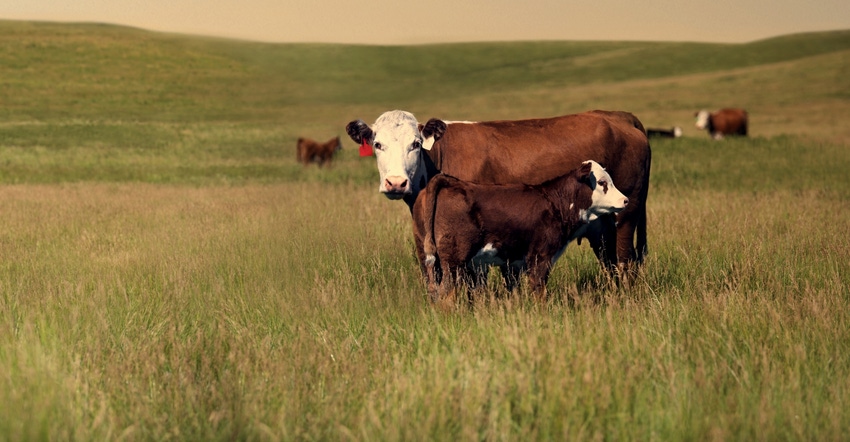Do your BRD homework
See the steps to take to help calves adjust to new environments.
November 1, 2022

Sponsored Content
By Brett Terhaar, DVM, Elanco Beef Technical Consultant
Back in school, doing homework was a necessary evil. You disliked doing it, but it generally helped prepare you for a test that would come later. Those that didn’t do their homework were lost when it came time to find out what they learned. Those that took the time to study and complete their work were much farther ahead and able to reap the rewards of their labor.
Your calves are about to face a test. They’re going to be faced with new environments, thrown in with strange cattle, fed new feed and experience all sorts of other changes that will add significant stress to their lives. That stress impacts the immune system and sets them up to be impacted by Bovine Respiratory Disease (BRD). Probably three-fourths of the morbidity and most of the mortality issues seen on feedlots has to do with respiratory disease associated with BRD.1
Health risks are our own fault
Unfortunately, we probably do more to put calves at risk for BRD through our own management practices. In many instances pathogens are already present in the upper respiratory tract, or respiratory microbiome, of the calf. These pathogens don’t typically cause harm, but when we intervene to wean, castrate, dehorn, transport, commingle and do other activities, we add risk for calves because we disrupt the microbiome and expose calves to disease pressures. Our management practices can tip calves over the edge and into sickness.
That’s why good old fashioned animal husbandry still is our best friend. Something as simple as preconditioning 45 days prior to weaning helps alleviate some of that risk. Get the vaccinations, dehorning, castration and everything out of the way while the calf is still on the cow.
Another important step is the status of the calf with regard to weaning. In some years when calf numbers are tight and demand is high, it’s tempting to pull the calf off the cow and market them right away. That’s a significant stress on the calf and the likelihood of that calf getting sick is pretty high.
If you have a large number of calves, and you’re trying to establish a reputation for raising quality calves, keeping them for 45 days or longer after weaning is a good idea. That gives calves time to adjust to life after momma, get on a different nutrition pattern and add weight before they begin their new life elsewhere. In today’s market where feed costs are high it might cost a bit more to feed grain to calves for three months before marketing them. But we’ll have a short calf crop this year so if you can feed calves until they hit 750 pounds you’ll reap the benefits. In many instances buyers are paying as much on a price per pound basis for 750-weight calves as they do for 500-weight calves, which is a huge win for calf raisers.
Build buyer trust
Doing things right with management and vaccinations helps build trust for buyers at the next stage of the marketing cycle. You want your buyers to believe you when you provide documentation that you’ve taken good care of your calves. That will manifest itself in healthy calves in your buyer’s feedlot.
Validating good management is one way to build trust. Implementing and documenting sound vaccine and antibiotic administration is important as well.
In today’s marketing environment, large marketing companies like Superior Livestock add premiums to calves that have been through a verified vaccination or backgrounding program. Feedlot owners will pay extra for calves with a documented health history. This includes basic husbandry activities as well as nutrition and vaccination documentation.
When it comes to vaccination protocols for BRD prevention, make sure the basics are covered. Start with a seven-way or eight-way clostridial vaccine and a modified live virus (MLV) vaccine that includes Infectious Bovine Rhinotracheitis (IBR), Bovine Viral Diarrhea (BVD) Type 1 and 2, Parainfluenza Type 3 (PI3), and Bovine Respiratory Syncytial Virus (BRSV). A killed viral can be used but an initial vaccination followed by a booster in 3 to 4 weeks is necessary to give protection. Those are the basic vaccination protocols that buyers farther down the production cycle are looking for. An added bonus is if a vaccine against Mannheimia haemolytica is also part of the protocol.

Document antibiotic use
Some of our favorite antibiotics have become generic and the price is significantly lower, which means they are being used at a much higher rate than previously. Anytime an antibiotic has been used it exposes the microbiome to that antibiotic and puts selective pressure on the existing bacteria. If these antibiotics are being used across the board on calves, especially before those calves reach your buyer’s feedlot, you need to make your buyer aware of what antibiotics you’ve used so they can adjust their treatment protocols accordingly.
Be sure to document the protocols you’ve followed and let your buyer know. Maybe then they can delay processing at the feedlot to get the calves started on feed before working them. When they buy calves from higher risk suppliers, the game changes and those animals need attention right away to avoid a crash or disease spread.
With a tight calf crop this year, the market for good calves will be competitive. Do your homework in advance to align management practices to reduce risk and apply vaccination protocols to help calves transition to new environments. Document everything you do so your buyers understand and trust the work you’ve put in.
1 Edwards, A. Respiratory Diseases of Feedlot Cattle in Central USA. The Bov Prac 1996;30:5-7.
Elanco and the diagonal bar logo are trademarks of Elanco or its affiliates.
© 2022 Elanco. PM-US-22-1726
About the Author(s)
You May Also Like

.png?width=300&auto=webp&quality=80&disable=upscale)

